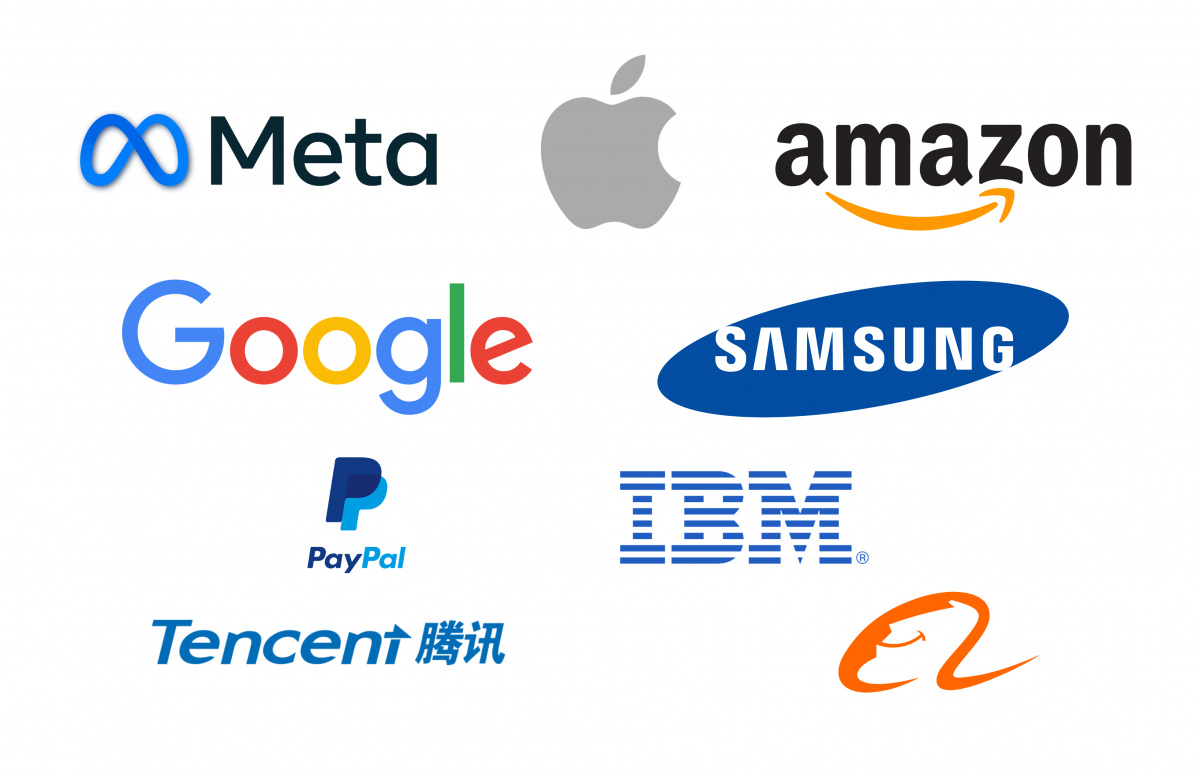What is Driving BigTech Activity in Fintech?

- Sabrina Akramova, Editor & Content Manager at Financial IT
- 04.04.2022 09:00 am #bigtech #fintech #apple
During the Covid-19 outbreak, fintech app adoption significantly soared, fueling further growth and investment interest. The first quarter of 2021 was a record-breaking period for fintech, with a maximum amount of deals, fundraising, exits, and mega-rounds. To capitalize on the current fintech boom, BigTech companies (Meta, Apple, Google, Amazon) have been taking intentional initiatives to increase their market share in financial services. In addition to digital banking and lending, internet titans are reworking their financial services offerings through collaborations with traditional institutions and in-house solutions.

Main investment trends
It is important to note that BigTech funding to fintech companies fell by 4% to $2.2 billion in 2020 during the Covid-19 pandemic. Google led BigTech in 23 novel fintech investments between 2020 and 2021, followed by Amazon (7). With 45 fintech investing rounds between 2016 and 2021, Google Ventures is by far the most active major tech venture arm. As BigTechs are partnering to become fintech vendors, Apple and Google already work with banks to integrate banking into their services, while Amazon is looking to extend its lending offerings.
While these alliances benefit both internet giants and established brands by increasing customer attraction and retention, an emphasis on in-house offerings may endanger older institutions. In addition, non-banking apps (social media) are increasingly linked with money management, providing tech companies additional motivation and influence to keep financial offerings in-house in the race to become the go-to app for banking, shopping, and networking, conventional banks may be further marginalized.
Top BigTech funding rounds between 2016 and 2021 include Gojek (with a deal amount of $1,5 billion in 2018 led by KKR, BlackRock, Temasek, Google, Samsung Ventures, and $1$ billion in 2019 led by Tencent Holdings, Google, Mitsubishi Corporation), Stripe ($600 million funding led by Google Ventures, Andreessen Horowitz, General Catalyst, Sequoia Capital), Oscar ($400 million deal amount led by Google Ventures, Founders Fund, Khosla Ventures, Goldman Sachs), and Robinhood ($363 million funding led by Kleiner Perkins Caufield & Byers, Sequoia Capital, DST Global, capitalG).
What are the main driving factors?
BigTech companies now outnumber global systemically significant financial institutions (G-SIFIs) in terms of market capitalization. BigTech's financial services activities have risen fast in various economies, particularly payments and lending to SMEs. While most BigTech companies start in payments, frequently to support their “core” business (e-commerce, advertising, etc.), the order of business sectors and how payments are handled varies widely. In brief, main driving factors for BigTech activity in Finance are:
- Embedded fintechs. As APIs make it easier to integrate banking services into any product, businesses of all kinds are looking for new financial services revenue streams.
- Scalability. With their massive user bases, tech giants already have a great reach that may be exploited to increase the adoption of their financial services solutions.
- Rising levels of investor interest. Fintech companies raised a record $22.8 billion in the first quarter of this year, a 98 percent increase quarter-over-quarter.
- Data network effect. Massive amounts of consumer data are held by tech corporations. can be used to develop customized financial products.
By expanding into new areas, BigTech companies are increasingly challenging traditional financial institutions. However, there are additional modes of communication available. For instance, banks rely on BigTech firms to provide critical third-party services. Amazon Web Services is the world's largest cloud provider, supplying cloud computing services to a wide variety of financial institutions. Microsoft and Google are also significant cloud service providers, with Ali Cloud (a subsidiary of the Ali Group) dominating the Asia market. Numerous BigTech companies are now offering artificial intelligence and machine learning capabilities to business clients, including financial institutions.
On the demand side, consider:
- Customer demands.
- Consumer preferences.
- Demographics
- Trust in technology
- Customer value
Demand-side drivers include shifting demographics, customer value, and preferences. Several studies and surveys revealed that younger generations adopt FinTech and BigTech at a faster rate. A 2017 EY survey found that young persons aged 25-34 (48%) and 35-44 (44%) were the most likely to adopt FinTech goods (41%), while EY 2019 research shows that FinTech adoption is higher in regions or nations with a younger population. With younger cohorts entering the market, FinTech adoption is likely to increase, as their preferences and expectations differ from previous generations.
Young consumers prefer to acquire and pay instantly, therefore speed, ease, and improved user-friendliness are desired qualities of transactions, including financial ones. The faith in technology and tech corporations is high among the millennials (Bain & Company and Research Now 2017). However, Nair (2019) claims that overall trust in technology may be eroding due to data abuse scandals. Finally, contemporary customer behavior seems to be increasingly guided by ethical considerations. Some data suggests that consumers prefer FinTech solutions (e.g., P2P lending) because they are perceived as more socially responsible and valuable than traditional banking (EY 2017; FSB 2019b).
On the supply side, the following factors are important:
- Data access.
- Technological advantage.
- Funding.
- Lack of Regulations.
- Lack of competition.
The regulatory framework is a major supply-side driver of FinTech and BigTech market position. Growing research shows how regulations can help or impede FinTech and BigTech adoption. It seems evident that nations with less stringent (or more adequate) bank regulations have larger volumes of some FinTech services or investments (Cambridge Centre for Alternative Finance—CCAF 2019). However, the findings from the study do not support the widely held belief that regulatory arbitrage drives FinTech adoption. Rau (2017) examined the influence of regulation in-depth and found that nations with better regulation, rule of law, anti-corruption, ease of entry, and profitability of existing intermediaries have higher quantities of alternative financing.
Conclusion
Policymakers should keep an eye on new markets and learn about their dangers and opportunities. Officials in several jurisdictions have already taken steps to further regulate fintech credit systems. Recent regulatory initiatives in China, the EU, and the US demonstrate the continuous debate on how best to control giant digital businesses. Thus, the protection of consumer data will be a new trade-off for ensuring financial stability and market integrity. Fintech firms have also highlighted a need for regulatory interventions related to fundamental regulatory tasks such as customer on-boarding and streamlined authorization processes. Despite industry appeals for more regulatory support, most fintech businesses have been unable to gain increased support from their major regulator or supervisory relationship. Authorities may learn a lot from one other and from global studies.



















